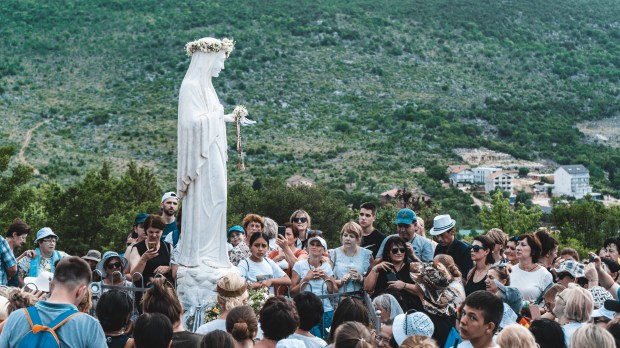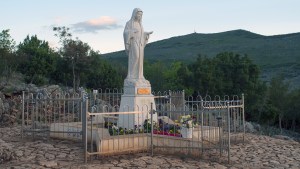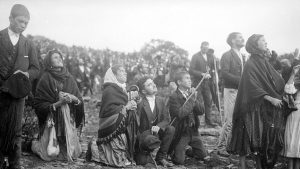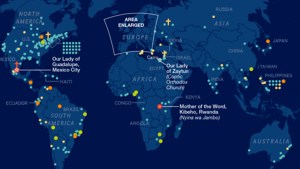“Have the courage to live your youth by entrusting yourselves to the Lord and setting out with him,” declares Pope Francis in a Croatian-language message sent August 2, 2021, to participants of Mladifest, an annual prayer meeting for young people, taking place through August 6 in Medjugorje.
Drawing from the Gospel account of the “rich young man,” The Holy Father invites young people to let themselves “be conquered by [Christ’s] loving gaze that frees us from the seduction of idols, from the false riches that promise life but bring death.”
Do not be afraid to welcome the Word of Christ and accept his call. Do not be discouraged like the rich young man in the Gospel; instead, fix your gaze on Mary, the great example of the imitation of Christ, and entrust yourselves to her who — with her affirmative response, “Here I am” — answered unreservedly to the Lord’s call.
Pope Francis promised the young people that “the joy of the Gospel fills the heart and the whole life of those who encounter Jesus.”
Those who allow themselves to be saved by Him are freed from sin, from sadness, from inner emptiness, from isolation. With Jesus Christ, joy is always born and reborn.
Medjugorje
Medjugorje continues to be a complex pilgrimage site.
In May of 2019, Pope Francis decreed that dioceses and parishes may organize pilgrimages to Medjugorje, though no official pronouncement on the authenticity of the apparitions was made.
This followed after the Holy Father saying publicly that while Mary “isn’t the boss of a Post Office, there to send messages every day,” still, “God performs miracles in Medjugorje. In the midst of the craziness of human beings, God continues to work miracles.”
“I think there’s grace in Medjugorje,” he said then. “There’s no denying it. There are people who have conversions.”
In May of this year, when the Vatican organized a Rosary Relay with 30 shrines from around the world to pray for an end of the pandemic, Medjugorje was included.
An apparition site?
Nevertheless, the supposed visions of Mary in Medjugorje have never been recognized by the Church. There has been unofficial talk that the first seven apparitions would be deemed credible. This supposition was made including by the Pope’s special envoy to the shrine of Medjugorje, Archbishop Henryk Hoser, who said this could be the case already in 2017.
However, more recently, the former spiritual director of the visionaries was excommunicated.
The Congregation for the Doctrine of the Faith excommunicated the former priest Tomislav Vlasic, it was announced October 23, 2020, by the Diocese of Brescia, Italy, the territory in which the former Franciscan continued to carry out some apostolic activities, despite having been reduced to a lay state in 2009.
In March 2009, Benedict XVI signed a decree reducing to the lay state the Franciscan Tomislav Vlasic, spiritual director of the visionaries of Medjugorje.
He had asked to be released from his priestly duties after the Congregation for the Doctrine of the Faith began an investigation against him in 2008 “for the spreading of dubious doctrine, manipulation of consciences, suspicious mysticism, disobedience to legitimate orders” and for adultery as well.
The excommunication arose because of his continuing to declare himself a Catholic priest and carry out activities as such.
What’s an approved apparition?
When an apparition is approved by the Vatican, it is declared “worthy of belief” — a private revelation that can be helpful to Christians striving toward the ultimate goal of Heaven. Catholics are not required to believe in the authenticity of apparitions, even those approved by the Church.




